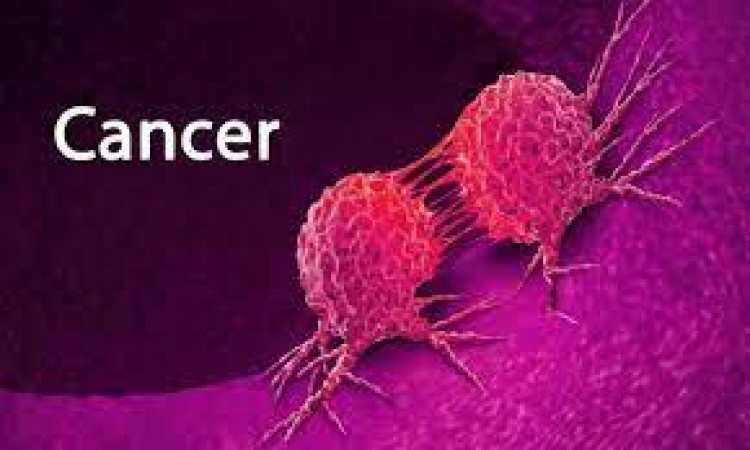
Cancer is a large group of diseases that can affect any human organ, characterized by the uncontrolled growth of abnormal cells that may spread to other organs. While cancer can occur in both men and women, young women are increasingly being urged to be more vigilant due to a rise in reported cases. In this article, we explore the significant impact of cancer, its prevalence, and the three most common types affecting young women.
Global Impact of Cancer: A Leading Cause of Death
According to the World Health Organization, cancer ranks as the second-largest cause of death worldwide. In 2018, an estimated 9.6 million people lost their lives to this disease, signifying that one in every six deaths was attributed to cancer. Common cancers in men include lung, prostate, colorectal, stomach, and liver cancer. For women, certain types of cancer pose particularly high risks.
Cancer in Young Women: A Growing Concern
Cancer can affect individuals of any age, but recent trends highlight a concerning increase in cases among young women. Addressing this issue requires a comprehensive understanding of the three most prevalent types of cancer affecting them.
Breast Cancer:
Breast cancer is a complex and multifaceted disease that predominantly affects women. It is characterized by the uncontrolled growth of abnormal cells in the breast tissue. Understanding the risk factors, symptoms, and available preventive measures is crucial for addressing the prevalence of breast cancer among young women.
Risk Factors:
Several factors contribute to the development of breast cancer, and understanding these can aid in early detection. Family history, genetic mutations (such as BRCA1 and BRCA2), hormonal factors, reproductive history, and lifestyle choices play pivotal roles. Young women with a family history of breast cancer or specific genetic mutations should be particularly vigilant.
Symptoms:
Early detection is key in improving outcomes for breast cancer patients. Awareness of symptoms, such as lumps in the breast or armpit, changes in breast size or shape, nipple discharge, or skin changes, is essential. Regular self-examinations and clinical screenings can help detect abnormalities at an early stage when treatment is often more effective.
Prevention and Treatment:
Preventive measures for breast cancer include lifestyle modifications such as maintaining a healthy weight, regular exercise, limiting alcohol consumption, and avoiding tobacco. Mammography and other imaging techniques are crucial for early detection. Treatment options vary depending on the stage of cancer and may involve surgery, chemotherapy, radiation therapy, hormone therapy, or a combination of these.
Cervical Cancer:
Cervical cancer is a type of cancer that originates in the cervix, the lower part of the uterus. It is primarily caused by persistent infection with high-risk strains of human papillomavirus (HPV). Understanding the risk factors, preventive strategies, and advancements in vaccination is crucial in addressing cervical cancer among young women.
Risk Factors:
HPV infection is the leading cause of cervical cancer. Other risk factors include a weakened immune system, smoking, long-term use of oral contraceptives, multiple sexual partners, and early initiation of sexual activity. Vaccination against HPV, especially before the onset of sexual activity, is a significant preventive measure.
Prevention and Screening:
Regular Pap smears or Pap tests are essential for detecting precancerous changes in the cervix early on. HPV vaccination is recommended for young girls to protect against specific high-risk strains. Practicing safe sex, avoiding smoking, and maintaining a healthy immune system are additional preventive measures.
Advancements in Vaccination:
The introduction of HPV vaccines has revolutionized cervical cancer prevention. These vaccines target specific high-risk HPV strains and have shown effectiveness in reducing the incidence of cervical precancers. Ensuring widespread access to and awareness about HPV vaccination is critical in combating cervical cancer.
Ovarian Cancer:
Ovarian cancer is a challenging disease to detect early due to its often asymptomatic nature in the initial stages. It originates in the ovaries and can spread to other parts of the abdomen. Understanding the risk factors, potential symptoms, and genetic factors is essential for addressing ovarian cancer among young women.
Risk Factors:
Genetic factors play a significant role in ovarian cancer, with mutations in the BRCA1 and BRCA2 genes associated with increased risk. Other risk factors include a family history of ovarian or breast cancer, age, reproductive history, and the use of hormone replacement therapy. Identifying women with a genetic predisposition is crucial for early monitoring and intervention.
Symptoms:
Ovarian cancer is often called the "silent killer" because symptoms may not manifest until the disease has advanced. Common symptoms include abdominal bloating, pelvic pain, difficulty eating or feeling full quickly, and urinary urgency or frequency. Awareness of these symptoms is vital for early diagnosis.
Genetic Factors:
Understanding the role of genetic factors, especially mutations in the BRCA genes, is crucial in identifying women at higher risk. Genetic counseling and testing can help individuals make informed decisions about their healthcare, including surveillance and preventive measures.
Early Detection Challenges:
Detecting ovarian cancer early poses challenges due to the lack of specific symptoms and effective screening methods. Research is ongoing to identify biomarkers and improve early detection techniques. Increased awareness among healthcare professionals and the general public is essential for timely intervention.
In conclusion, each of these cancers presents unique challenges for young women. Empowering individuals with knowledge about risk factors, symptoms, and preventive measures is crucial in improving outcomes and reducing the impact of these diseases. Regular screenings, lifestyle modifications, and advancements in medical interventions collectively contribute to the fight against breast, cervical, and ovarian cancers. Educational initiatives and accessible healthcare resources play pivotal roles in ensuring the well-being of young women in the face of these health challenges.
Drinking Water with THESE Foods is Dangerous, Avoid These Common Combinations for Better Health
Keep These Things in Mind After Marriage, or the Relationship May Break
If You Want to Immediately Control High Blood Pressure, Follow These Tricks